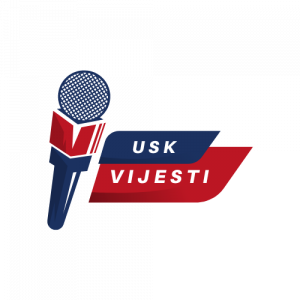By evaluating the top mortgage lenders in 2024, you can discover a home loan that offers a competitive interest rate and repayment period.
Numerous lenders on this list provide home loans that accommodate flexible down payment and income criteria, which can be advantageous for individuals who face challenges in meeting the qualifications for a conventional mortgage.
By taking into account various factors such as the comparison of interest rates to the national average, fees, potential discounts, borrower eligibility, customer experience, and the simplicity of the application process, we have evaluated and ranked both traditional and online lenders.
The top mortgage lenders in the industry.
Ally The top choice for those on a tight budget.
FHA loans are known for being the superior choice, offering the best options available.
Bank of America is widely regarded as the top choice for individuals seeking closing cost assistance.
USAA stands out as the top choice for those seeking low origination fees.
Veterans United stands out as the top choice for individuals seeking VA loans.
New American Funding stands out as the top choice for individuals seeking customized mortgage solutions.
Chase is renowned for offering exceptional discounts to its customers.
SoFi stands out as the ideal choice when it comes to expediting the closing process.
Navy Federal Credit Union is widely regarded as the top choice for military personnel.
Wells Fargo is recognized as the top choice for individuals with limited credit history.
The projected mortgage rates for the year 2024 indicate potential fluctuations in the housing market.
In an attempt to address inflation, the Federal Reserve has raised the federal funds rate on 11 occasions since March 2022. Consequently, mortgage providers have responded by raising their rates to levels not seen in generations, thereby affecting the buying capacity of both prospective homeowners and those looking to purchase a property for a second time.
In 2024, it is projected by experts that mortgage interest rates will reach their highest point, potentially reaching as high as 7% or even 8%. Following this peak, rates are expected to gradually decrease and may settle between 5% to 6% by the end of the year. However, the ultimate trajectory of rates will be determined by the future decisions made by the Federal Reserve. If the current trend of higher rates being sustained for longer periods of time shifts, there is a possibility that rates could decrease at a faster pace.
Can you please explain the concept of a mortgage and provide an overview of its functioning?
Through monthly payments, a mortgage provides the financial means to acquire a home and is gradually paid off over a designated period of time. Typically, home loans come with a fixed interest rate and a repayment duration that ranges from 10 to 30 years.
The rate at which interest accrues on your loan is determined by various elements such as the duration of your loan, the type of mortgage you choose, and your credit history. Your rate, term, and monthly payment will remain unchanged unless you opt to pursue a mortgage refinance, which involves replacing your current loan.
For the duration of the loan, individuals who have opted for a fixed-rate mortgage experience consistent monthly payments. As the outstanding balance on the loan diminishes, a larger portion of the payment is allocated towards reducing the principal, resulting in a decrease in accrued interest.
Opting for longer-term mortgages, like a 30-year term, allows for lower monthly payments, but it is important to note that the total interest costs are higher compared to shorter terms due to the extended duration required to fully repay the loan.
On the other hand, opting for shorter terms such as a 15-year mortgage typically results in lower overall interest and more favorable interest rates, despite the higher monthly payment required to meet the accelerated payoff deadline.
There are various categories of mortgage options available.
When it comes to obtaining a mortgage, there are numerous options available for you to consider. Each of these loan types has the potential to assist you in purchasing a home; however, it is important to note that they come with varying borrower prerequisites, interest rate structures, and associated costs.
The following is a list of various mortgage options available:
A conventional mortgage is a loan provided by a private lender, rather than the government. These loans often have reduced fees compared to federally-backed loans. Furthermore, the majority of conventional mortgages are conforming loans, meaning they adhere to county-specific loan limits established by the Federal Housing Finance Agency (FHFA) and offer lower interest rates than non-conforming loans.
A fixed-rate mortgage is a type of home loan that maintains a consistent interest rate and monthly payment throughout its duration. Borrowers adhere to an amortization schedule spanning from 10 to 30 years for repayment.
The Adjustable-rate mortgage (ARM), also referred to as a variable-rate mortgage, offers borrowers a fixed interest rate for an initial period lasting several years. After this introductory phase, the rate transitions to a variable rate that can fluctuate in either direction at predetermined intervals. As a result, your monthly payment will vary in accordance with these rate adjustments. However, this type of loan can be a cost-effective option for homeowners who intend to sell their property within a few years.
In high-cost housing markets, individuals have the opportunity to obtain a jumbo loan, which is a non-conforming loan specifically designed for purchasing properties that surpass the conforming loan limit. It is worth noting that the interest rate associated with jumbo loans tends to be higher compared to conforming loans.
The FHA loan, supported by the Federal Housing Administration (FHA), offers more flexible credit and down payment criteria compared to conventional mortgages. Lenders may only mandate a minimum credit score of 580 and a down payment of 3.5%. It is important to note that mortgage insurance premiums may be applicable throughout the entire duration of repayment.
The U.S. Department of Veterans Affairs (VA) offers a loan program specifically designed for eligible service members, veterans, and spouses. This program provides insurance for home loans, allowing borrowers to secure a VA-backed purchase loan without the need for a down payment or mortgage insurance. However, there is a one-time funding fee that applies.
The USDA loan, which is accessible to borrowers residing in eligible rural areas, may not necessitate a down payment. However, there are income requirements to meet and annual mortgage insurance fees to consider.
With construction loans, you have the opportunity to finance the construction of a brand new home from start to finish, while minimizing the costs of borrowing through multiple draws. Once your house is ready for you to move in, there is the potential to convert this loan into a permanent mortgage.
During the initial phase of the repayment period for an interest-only mortgage, you are only required to make payments towards the interest. However, once the introductory period concludes, you will be responsible for making payments towards both the principal and the interest.
A balloon mortgage is a type of loan that involves making low monthly payments but requires a substantial lump-sum payment at the end. The high level of risk associated with this loan type means that the Consumer Financial Protection Bureau seldom classifies it as a qualified mortgage.
The piggyback loan is a secondary mortgage option that assists in financing the down payment, effectively reducing the loan-to-value ratio to 80% or less for the primary mortgage. Consequently, the buyer is relieved from the requirement of paying private mortgage insurance premiums.
For homeowners who want to access their available equity in one lump sum, a home equity loan offers a second mortgage option. Unlike a cash-out refinance, this loan keeps the original mortgage intact and comes with a fixed interest rate.
For current homeowners, there is a financial option known as a home equity line of credit (HELOC). This allows them to access their existing equity in increments as cash is required. During the draw period, only interest payments are necessary, and once this period ends and the repayment period commences, principal payments become mandatory. It is important to note that HELOC rates are typically subject to change.
If you are a first-time homebuyer, it’s important to know that there are options available to you that can help reduce the down payment requirements on conventional loans. In fact, you may be eligible for down payments as low as 3% or even less. Some specialized programs even waive the need for private mortgage insurance (PMI), although it’s worth noting that your interest rate might be slightly higher if you choose this route instead of putting down at least 20%. Additionally, both lenders and government agencies may provide grants and assistance for down payments or closing costs specifically tailored for first-time homeowners.
The process of applying for a mortgage can be broken down into several steps to ensure a smooth and successful application.
By following these outlined steps, you can increase your chances of meeting the requirements necessary to qualify for a home loan.
Assess your credit background and evaluate your credit rating to ascertain the mortgage programs that you may qualify for at the outset. Typically, a minimum credit score of 620 is necessary for conventional home loans, whereas government-backed mortgages may accept scores as low as 580 or even 500.
To expedite the application process, it is recommended to gather essential paperwork such as recent pay stubs, two years of income tax returns, two months of bank statements, and government-issued ID cards. Having these documents readily available will save you valuable time when it comes to applying.
When seeking mortgage preapproval, it is crucial to evaluate different lenders. While it is true that applying for preapproval necessitates a hard credit check, it also provides the opportunity to obtain a personalized interest rate and loan limit for both conventional and government-backed programs. To ensure that you secure the most favorable terms, it is advisable to obtain rate quotes from multiple lenders and compare their offers.
Once your offer has been accepted by the seller, the next step is to submit a loan application. This involves approaching your preferred lender and working with a loan officer who will assist you in evaluating various loan and down payment choices, ensuring that you secure the most favorable interest rate and monthly payment.
To finalize the underwriting process, you will need to go through the application-to-close process, which typically spans a period of 30 to 45 days. Throughout this timeframe, the lender will carefully assess your credit and income records, while also requesting any necessary documentation to support your application. Additionally, an appraisal will be conducted on your new property to determine your loan-to-value ratio and establish the minimum down payment required.
During the loan closing process, you will have the opportunity to sign the necessary paperwork that solidifies the repayment agreement. It is important to note that any upfront fees must be paid at this time. Once the closing is complete, you can officially move into your new home and begin making your monthly payments.
Helpful advice on selecting the optimal mortgage
By implementing these strategies, you can effectively locate the most suitable mortgage lender and loan option for your needs.
Determine your affordable housing budget by utilizing a home affordability calculator. This handy tool will provide an estimate of the monthly payment you can comfortably handle. Additionally, establishing a maximum purchase price will simplify the preapproval process, especially if you manage to find a property that falls below your borrowing limit.
Examine the various choices available for home loans. Your eligibility for government-backed FHA, VA, or USDA loans may be influenced by factors such as your credit score, annual income, and geographic location. These particular loan options often come with borrower requirements that are more forgiving compared to conventional loans.
Take into account the down payment criteria. Individuals purchasing a home for the first time might only need to provide a down payment of 5% or less. These types of loans may have more lenient qualification requirements compared to traditional conventional loans. However, it is worth considering a down payment of 20% to avoid the need for private mortgage insurance.
When selecting a mortgage term, consider choosing either a 15-year or 20-year fixed-rate mortgage as opposed to a 30-year term. By opting for a shorter term, you can potentially qualify for a lower interest rate, provided that you can manage a higher monthly loan payment. This decision can ultimately result in paying less interest over the course of your mortgage. Additionally, it is important to accurately estimate your monthly mortgage escrow payments in order to calculate your housing costs effectively.
To ensure you get the best deal on your mortgage, it’s important to compare multiple lenders. By prequalifying with different lenders, you can assess and compare the varying mortgage rates and fees that may be associated with a loan of similar amount and repayment period. It’s not just about the upfront closing costs and monthly payment; you should also consider any additional benefits that a lender may offer, such as waived lender fees if you decide to refinance in the future.











